Requirements of national regulations
The regulatory form "Instruction on the arrangement of lightning protection of buildings, structures and industrial communications" was approved by the Ministry of Energy of the Russian Federation under the index of IS 153-34. 21. 122-2003. This national standard does not regulate any special conditions or requirements. Therefore, the power industry engineers turn to the form "Instruction for the arrangement of lightning protection of buildings and structures" AD 34. 21. 122-87. The standard was approved on July 30, 1987 as part of the work of the State Committee for Construction Affairs of the USSR and was applied in completely different economic conditions. But more importantly, its concept was developed taking into account the currently outdated automatics base, control circuits and communication information systems.
According to the form AD 34.21.122-87, industrial complexes containing rooms and areas of increased explosive danger (B-I classification) refer to category I of lightning protection. Protection of such structures is carried out by separately located lightning rods. The constructions of lightning rods are installed at a strictly regulated distance to the protected structure. In the air, the interval from the lightning rod to the object is designated as Sв. The distance from the object to the lightning rod contour on the ground is Sз. The intervals Sв and Sз are determined on the basis of the height of the protected structure and the specific resistance of the soil layer at the installation point of the lightning rod. It is noteworthy that the regulatory enactment of 1987 takes into account the specific resistance of soils within 1,000 Ω * m (interval Sв = 12 meters, for industrial complexes with a height of not more than 30 meters). Soils with higher resistance are not considered by the form. The isolation interval in the soil is calculated by the formula Sз = Sв+ 2 meters (soil resistance range - within 1,000 Ω*m). Lightning rods for the protection of industrial complexes of category I form a protective zone of class A.
Constructions, installations and structures creating danger zones B-Iг, according to the form AD 34.21.122-87 are equipped with lightning protection category II. Natural or specially mounted lightning rods are installed either on the protected structure or in the surrounding area. Experts allow equipment of the roof of the protected buildings with a lightning protection mesh as an additional protection.
In the storage of hydrocarbon (synthetic) fuel, the instruction separates the requirements for lightning protection. Differentiation of the rules and norms of lightning protection measures takes the storage volumes of hydrocarbons into account. Reservoir complexes with a volume of flammable liquids and gases from 100,000 m3 are protected by separately located lightning protection structures. For tank farms with liquefied hydrocarbons, the requirements set the limit of only 8,000 m3. However, they do not regulate the thickness of the metal walls of the tanks. Moreover, the regulations require that lightning rods must be installed only in those tank farms where the metal roof of the tanks has a thickness of less than 4 mm. With a volume of tanks less than 200 m3, regardless of the thickness of the walls cross-section, lightning rods are not installed.
In such a normative differentiation, it is very difficult to follow the logic. With all the severity of the regulatory form, the neglection of the compilers of a possibile fire at the breakdown of a thin-walled metal roof of tanks by lightning confuses. In case of a thin roof being melted by a lightning channel, the flame will certainly cover several railway tanks and provoke large-scale explosions of combustible materials and mixtures. The Instructions requiring mandatory protection of tanks with thick steel walls from direct contact with lightning are also confusing. Given that themelting of thick-walled metal structures by lightning is impossible, the prescription looks ridiculous. The reference to the fact that a lightning discharge can provoke the outbreak of hydrocarbon emissions over the respiratory armature does not clarify, but rather confuses the regulations. Further in the work we will prove that for the ignition of gas emissions from lightning electricity, direct exposure to the lightning channel is not necessary.
The form AD 34.21.122-87 also does not indicate the reliability indexes of lightning protection. They are prescribed in the Manual to the specified Instruction. Section № 7 of the Manual describes the requirements for the reliability of protection in sectors A and B. For sector A, the protection reliability is 0.995, for B - not less than 0.95. These indexes are a direct and gross error of the authors of the requirements. A computer program check, conducted on the basis of statistical methodology, revealed the real reliability of zones A and B. For sector A, the indexes do not even reach 0.96. For B, the limit values are 0.84. In modern conditions, the required reliability for the first level of protection is 0.98, for level II - no less than 0.95. It turns out that the prescribed data is significantly greater than the revealed true reliability indicators.
Requirements of enterprise standards
Rules of the standards are too numerous to consider them in full scale. Therefore, for our analytical study, we will choose two standards - by the companies Gazprom JSC and Transneft JSC. Approaches and methods of these standards differ considerably, which will allow us to study the problems of lightning protection of oil and gas facilities more deeply.
Regardless of the volume of fuel tanks, the standard of "Transneft" JSC obliges to apply the first level of lightning protection. For other facilities associated with the storage of flammable liquids, the standard prescribes protection of level II. The reliability index for the I level according to the standards of JSC Transneft is 0.99, for Level II - 0.95. The company standard allows the use of a lightning protection mesh of the European calibration: 5x5 meters for lightning protection of the I level and 10x10 for the level II. In this case, the developers of the rules do not explain the difference of meshes of the European calibration from the Russian analogues with the dimensions of 6x6 and 12x12 meters for the I and II levels, respectively. It is difficult to explain how reducing the sides of a cell by one meter (from 6x6 to 5x5) makes the mesh more resistant to direct discharges. However, the developers of the form are sure of their rightness.
The authors of the rules prescribe to install lightning protection mesh not less than for 100 millimeters from combustible roofing layer. They are sure that with such a placement, the steel mesh will intercept any angular discharges and will prevent the lightning touch of the combustible surface of the roof. The ineffectiveness of this prescription is easily verified by the computer program mentioned above, which was applied in the calculations of the protection zones for the form IS 153-34.21.122-2003. The calculations were made for a lightning protection mesh with a perimeter of 20x20 meters and cells of the European caliber 5x5 meters, which will be installed at the distance of 10 cm from the roofing plane. Theoretically, this design should show the reliability of protection at the level of 0.99. Figure 1, made according to the results of calculations, shows that the probability of a lightning breakthrough increases in direct proportion to the height of the protected structure. The chart shows that the probability is 0.37-0.48. Accordingly, the reliability index of lightning protection is hardly higher than 0.5, which is almost two times lower than the standardized index of 0.99.
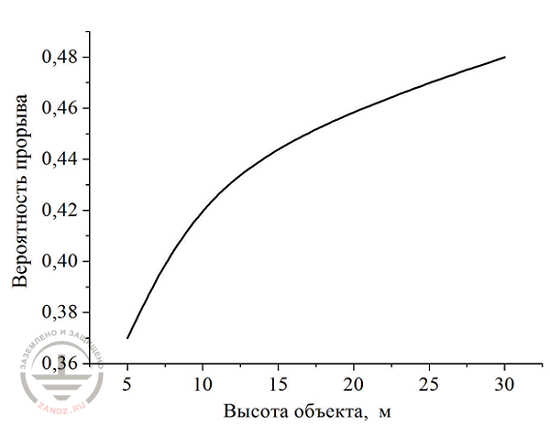
Figure 1. The probability of a possible lightning strike bypassing the lightning protection mesh located above the roof by 0.1 m*
According to the standard, if the lightning rod and the protected structure are connected to a single grounding device, the distance between the extremities of the lightning rod and the structure must be at least three meters by air. In this case, the specific resistance of the soil within the range of 100 ohm*m is taken into account. With a soil resistance of more than 100 Ohm*m, the authors of the Standard prescribe to increase the air spacing to four meters. The magical reference point of 100 ohm * m, established by the authors of the Standard, is completely incomprehensible. The electromotive force of induction, which manifests itself in the air between a lightning rod and an object, is in no way connected with the resistivity of the soil. But EMF induction reacts to the height of the protected complex. The rules do not say a work about the parameters of the height of buildings.
Also, the principles of calculating the insulation interval for lightning rods equipped with a separate grounding contour are not clear. For all types of soils, it is regulated at the level of five meters. Two questions arise immediately. An interval of five meters can easily be overcome by a channel sliding on the ground (described in detail in Section 3). The higher is the resistance of the soil, the more likely it is to occur. In addition, even in the five-meter interval up to 50% of the lightning discharge current can move to the grounding contour of the structure. This is due to the natural conductivity of the soil. There are no such fundamental remarks by the drafters of the Standard.
Gazprom's standards are logically and physically more organized and justified. External facilities are equipped with the second level of lightning protection. Installed on the roof of the protected structures or separately located lightning rods should guarantee reliability values at the level of 0.99. It is noteworthy that the lightning protection mesh of both European and domestic calibration is not even considered. Systems of several lightning protection structures are regulated to be designed using a special computer program (compiled by the Energy Research Institute named after G.M. Krzhizhanovsky - JSC "ENIN"). The isolation interval between the protected structure and a separate lightning rod is prescribed to be at least seven meters (with soil resistance up to 500 Ohm * m). With the increase of soil resistance, the insulation interval increases to 15 meters. The proportion between the isolation interval and the specific resistivity of the soil is determined by the empirical formula.
Design in accordance with the regulations
The analysis leads to the decision to partially or even completely abandon the use of lightning rods. Steel tanks with walls over 4 mm fully withstand a lightning strike. At the same time, lightning is not capable of melting or heating the structure to a critical temperature. No international experts in the field of energy can refuse this observation. A direct lightning strike into a tank with hydrocarbons does not lead to a fire. For a foundation structure, the lightning current is also not dangerous. If the foundation is made of reinforced concrete, it effectively and safely removes the lightning current into the ground.
It is impossible to ignore the zone of combustible emissions from the respiratory armatures of tanks. Penetration of the lightning channel into the area of ejection of combustible mixtures can lead to flare and detonation. Therefore, the standards of AD 34. 21. 122-87 prescribe the inclusion of the area of the respiratory armature into the protective zone of lightning-conductor structures.
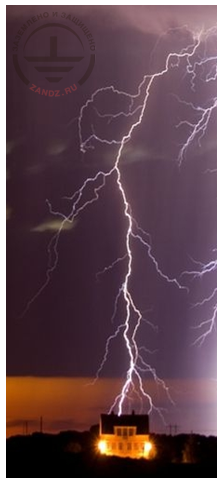
Figure 2. Lightning discharge with long branches*
In theory, this prescription is reasonable, but in practice it loses power. Lightning with a single channel is extremely rare. According to the International Council on High Voltage Systems, about 50% of lightning has several channels. When discharged, lightnings contact the objects on the ground by several channels at the same time. There may occur several dozens of unfinished lightning branches (Figure 2). Each branches is characterized by an insignificant current strength, but the temperature of the branches rarely falls below 5,000 on the Kelvin temperature scale. The lightning rod neutralizes the main branch of the lightning, but the remaining branches easily penetrate into the explosive sectors. Temperatures of incomplete branches are quite enough to ignite combustible emissions. In addition, the efficiency of the lightning rod levels the low-current flows that occur in a thunderstorm environment. They will be described in more detail in Section 4.
Judgments about the neutrality of lightning protection structures in relation to the protected objects also raise doubts. Lightning rods - the reason for the additional electromagnetic load on electronic equipment, which is operated inside the protected objects. Installation of a lightning rod increases the height of the object. The higher is the structure, the more frequently close lightning strikes occur. When using a rod lightning rod, the number of close discharges increases in proportion to the square of the altitude value. Each of the lightning strikes is accompanied by an increase in the strength of the electromagnetic field in the contact zone. In turn, the electromagnetic field of lightning destroys the electronic systems inside the structure. For example, with frequent discharges that fall into the lightning conductor structures, the sensors of the automatic fire extinguishing system suffer.
Despite the low efficiency of rod lightning protection, state inspection bodies insist on its installation, at least because it is prescribed by the regulatory standards. In this direction, designers are disarmed by short-sighted, and sometimes ridiculous, prescriptions of technical forms. It remains to adhere to the established requirements. But there is a good point in it. You can use technical solutions that comply with the regulations, but do not harm the object. For example, it is possible to install not too high rods of lightning rods, remove the lightning rod structures from fuel tanks or use other types of lightning protection. Catenary wire lightning rods cause a great sympathy.
When protecting industrial facilities from lightning discharges, catenary wire lightning rods are not used very often. These designs are widely used in the protection of high-voltage transmission lines (from 110 kV), which are laid through the air. The cable system is extremely simple: one or two large cables are mounted on top of the phase cables, which are connected to the grounding contour. Cables are laid along the entire length of the power transmission line. Special protection is shown by the protective systems with a negative angular arrangement of cables. In such designs, the cables are shifted relative to the phase cables according to the external principle. Thus, when discharged, the cables are the first to strike and protect the phase cables (Figure 3).
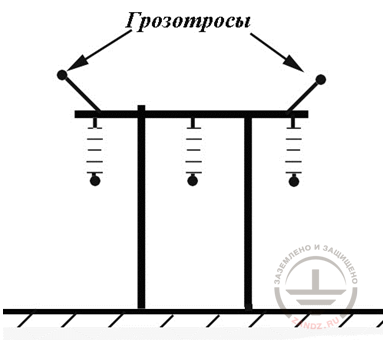
Figure 3. Method for making a lightning protection cable with negative angles*
Lightning rods with negative angular arrangement of cables are not suitable for main transmission lines, the length of which is more than 100 km. This is explained by the high cost of electric poles equipped with corner posts for cables. The problem of excessive openness of the central phase cable is also relevant. Some experts argue that cables with a negative angular arrangement protect it inefficiently.
As for tank farms, the use of cable lightning rods is quite justified. The length of parks is several hundred meters and the cost of supports with angle posts is insignificant in this case. If necessary, the central line of the park can be protected by an additional catenary wire (Figure 4).
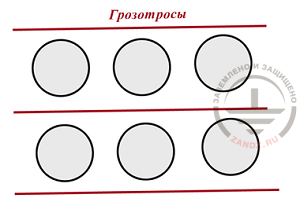
Figure 4. Cable protection of a group of tanks*
Figure 5 shows a chart that is compiled from the results of computer calculations. It connects the probability of a lightning strike to the protected area and the intervals between the protective cables. It is assumed that the length of the park is 100 meters, the height of the ground wire is 25 meters, the height of the tanks is 20 meters, external rise of the ground wire is 5 meters.
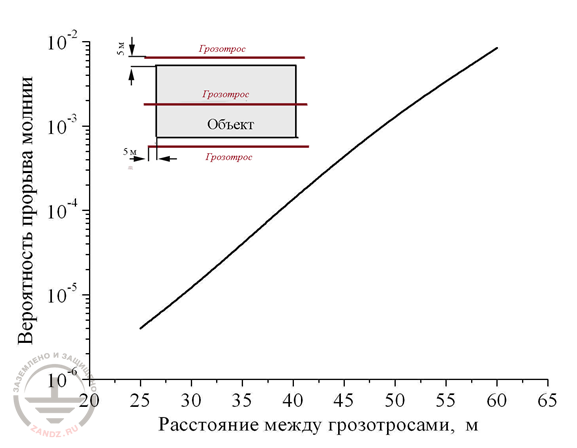
Figure 5. Dependence of probability of lightning breakthrough from intervals between protective cables*
Multi-rod systems are characterized by high-efficiency protection. In these constructions, ground wires rise slightly above the surface of the protected object.
As a result, the frequency of lightning discharges to the system does not increase. Accordingly, the number of electromagnetic influences on the structure of the park does not increase. The length of the park (and lightning wires) has no significant effect on the degree of probability of a breakthrough.
* - illustrations are taken from the article of prof. E.M.Bazelyan "Lightning protection of oil and gas facilities"
See also:
- Webinars with the leading industry experts
- Everything for the calculation of grounding and lightning protection
- Useful materials: articles, recommendations, examples
Related Articles:



